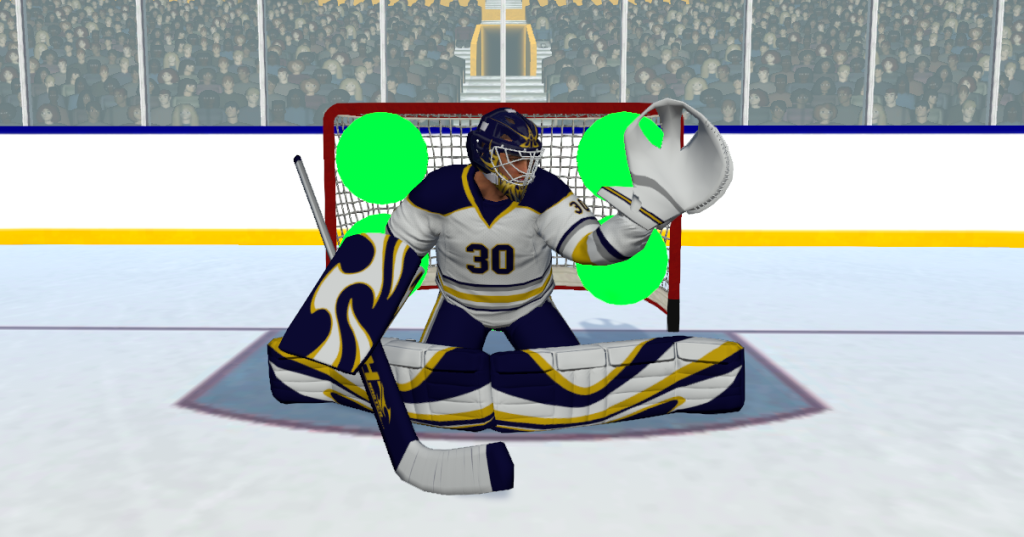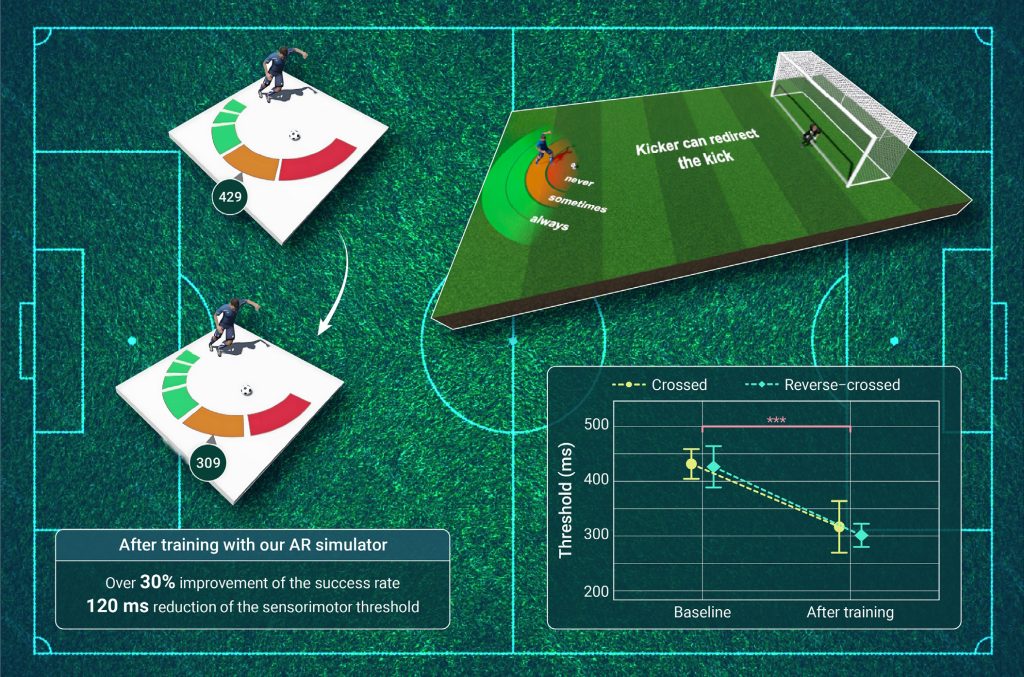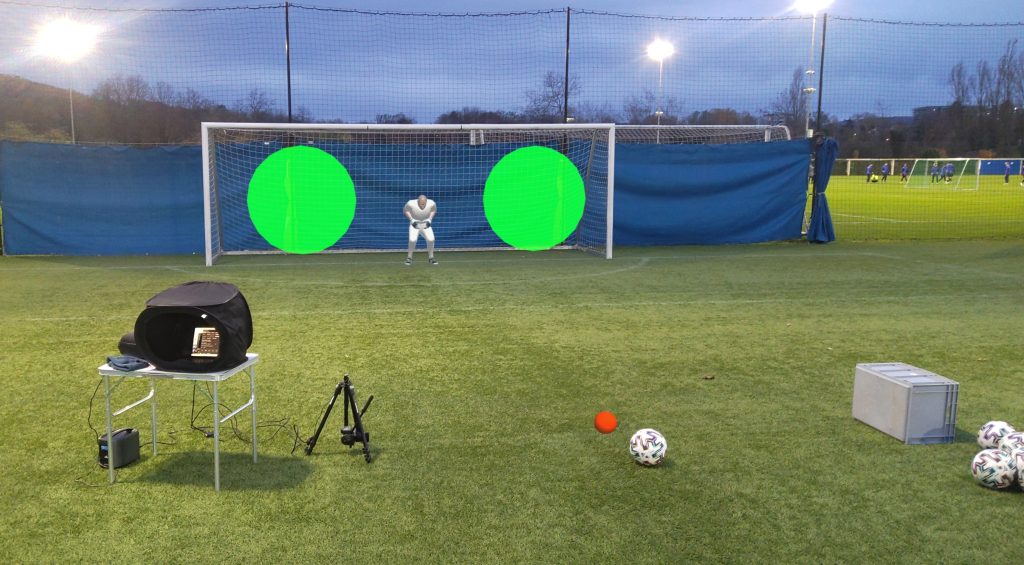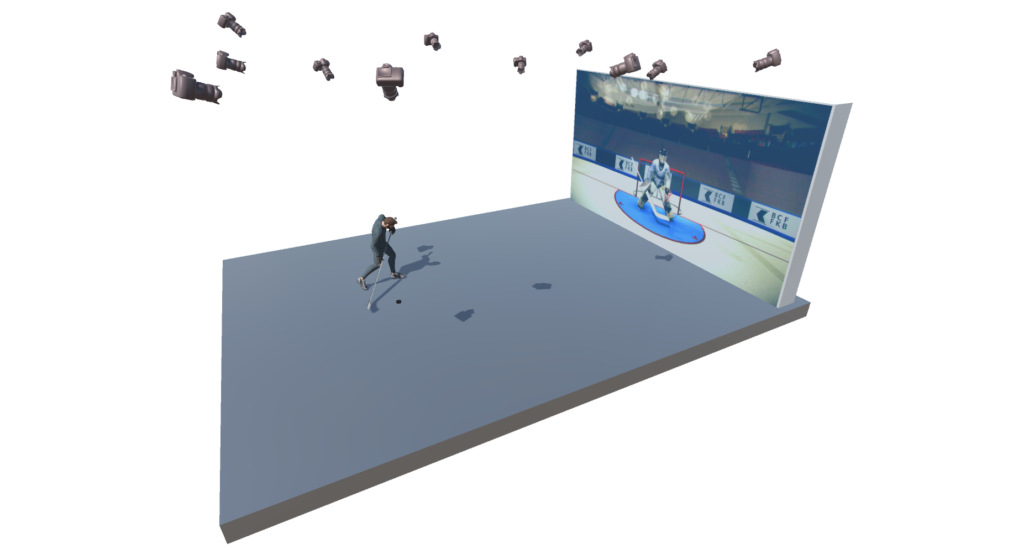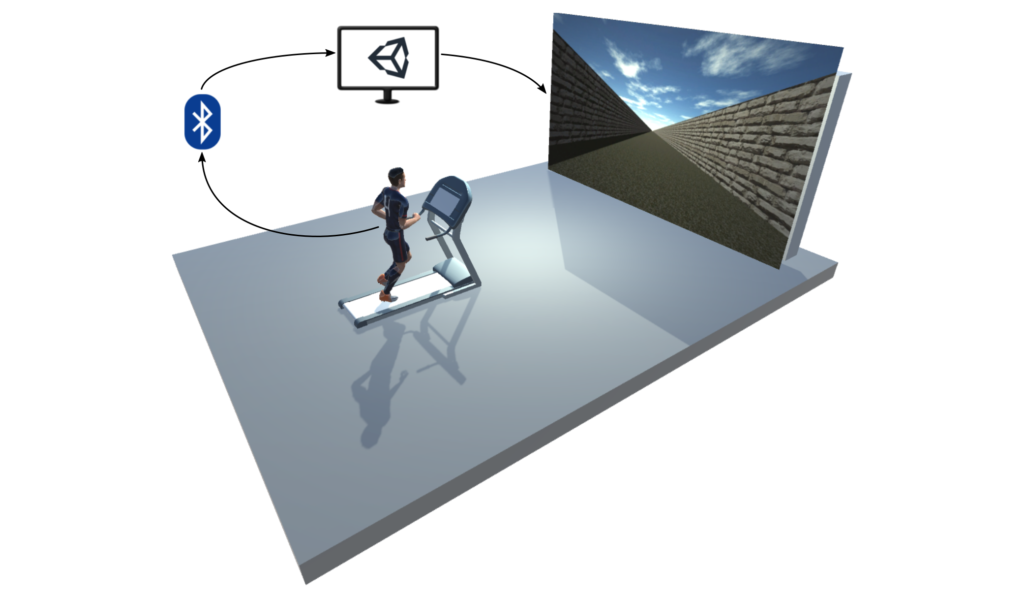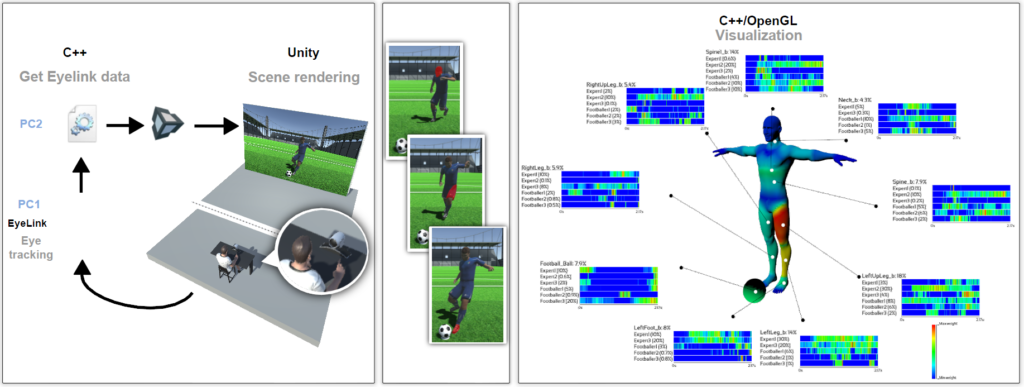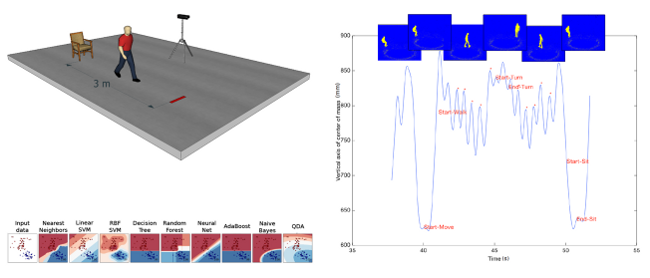VR simulator to train shooting accuracy and performance in ice hockey
The simulator specifically trains the perceptive and cognitive skills underlying shooting accuracy and scoring performance when the player faces the goalkeeper. Those skills are trained in different conditions, with different angles, at different distances, and using different types of feedback.
Penalty kick simulator
Penalty kick simulator designed to 1. assess the penalty scoring abilities of young and adult confirmed players, and 2. improve their performance using personalized training based on an optimization algorithm. The movements and the dive of the virtual goalkeeper are based on the movements of the kicker during the run-up to the ball. The difficulty of the task is constantly adapting to the performance and progress of each individual player. The movements / animation of the virtual goalkeeper are based on the real, motion-captured movements of a professional goalkeeper.
Slap-shot simulator
Slap-shot simulator designed to train slap-shot performance using personalized training based on an optimization algorithm. As with the penalty simulator, the movements of the virtual goalkeeper are based on the movements of the player during the preparation of the shot. The animation of the virtual goalkeeper is based on real, motion-captured movements of a professional goalkeeper.
Visual-kinesthetic integration in locomotion
How is visual and kinesthetic / efferent information integrated during human locomotion (e.g., walking, running)? Do the speed and characteristics of the visual scene (e.g., slope, contrast) affect perceived locomotor speed and perceived effort? Athletes walk or run on a treadmill in front of a large projection screen (5 * 3 meters) and the speed and characteristics of the scene are selectively manipulated. The athletes’ perceptual and physiological measurements are taken.
Goalkeeper’s perceptual strategies for the penalty kick
What are the perceptual strategies (information gathering strategies) that lead to the best performance? Are some gaze patterns associated with a better performance? Are the gaze patterns of experts different from those of novices? Above is an example in which we measured the eye movements of goalkeepers whose task was to anticipate the direction of the kick-to-come by observing the run-up of the kicker before ball contact. All kickers were virtual characters (i.e., avatars) whose movements (i.e., animation) were based on real, motion-captured movements of semi-professional players. A lab-developed visualization application was used to analyze the gaze patterns.
Fall prevention and detection
Falls in elderly people often result in serious medical problems such as fractures, trauma, disabilities, and loss of activity. Therefore, fall prevention is a human and economic issue. We try to define fall risk indicators that could routinely be used at home to automatically monitor the evolution of fall risk over time. Individuals performing everyday ‘motor tasks’ such as standing up, walking, turning around, or sitting down, are monitored by a Microsoft Kinect ambient sensor (top left). Several parameters related to the gait and movement patterns are automatically extracted (right). Different machine learning algorithms are then used to classify individuals based on their estimated fall risk (bottom left: low fall risk (red) vs high fall risk (blue)).
